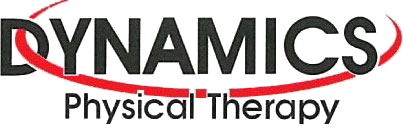Physical therapy in Northern Virginia for Exercise
Sport-related concussions continue to be a serious public health concern, as approximately 1.6 to 3 million concussions occur annually in the United States. Recent studies have shown increases in the prevalence and incidence of concussion in both high school and college athletes. Approximately 8.9 percent of all high school athletic injuries are concussions, while incidence rates for college athletes range from 5 to 7.9 percent. This article will provide a general overview of the signs, symptoms, management, and treatment of sport-related concussion.
Definition of a Concussion
A concussion occurs when an athlete’s skull contacts another object (i.e., an opponent, the ball, or the ground,) or comes to an abrupt halt (as in whiplash), causing the brain to rebound off of, or twist up against, the inside of the skull. These shearing forces can damage blood vessels that cause swelling and bleeding in the brain. Neurons can also be damaged, which impairs the brain’s ability to transmit important information from one area of the brain to another. This damage causes the concussed athlete to experience a wide variety of symptoms and cognitive difficulties.
Signs and Symptoms of a Concussion
A concussed athlete may present a wide variety of symptoms and impairments (See below). A common misconception regarding concussive injury is that an athlete must experience loss of consciousness in order for a concussion to be diagnosed. However, several studies suggest that fewer than 10 percent of athletes who sustain a concussion actually experience loss of consciousness, whereas headache, dizziness, confusion, and disorientation are reported more often by concussed athletes.
- Amnesia
- Confusion
- Headache
- Decreased appetite
- Loss of consciousness
- Tinnitus Nausea
- Slurred speech
- Poor attention
- Double vision
- Dizziness
- Fatigue
- Irritability
- Anxiety/depression
- Intolerance to sleep disturbances, loud noise
- Intolerance to emotional bright light disturbances
How to Prevent a Concussion
Unfortunately, there is no surefire way to prevent a concussion from occurring; however, steps can be taken to reduce the chances of sustaining this injury. First, athletic equipment should meet recommended standards for safety. All helmets should be thoroughly inspected, re-conditioned, or replaced every year to ensure they meet safety standards set by the National Operating Committee for Safety in Athletic Equipment. Second, athletes need to be taught proper tackling and heading techniques used in sports such as football and soccer, as both these sports have high incidence of concussion. Football players must be taught the dangers of the “spear” tackle (i.e., using the helmet as a battering ram). The National Athletic Trainers’ Association recommends football coaches mandate two educational sessions each year (e.g., pre-season and midseason) for proper tackling techniques. Soccer players should make sure they use proper form to head a soccer ball as improper heading may increase the chances of sustaining a concussion. Third, athletes, coaches and parents need to be educated on the signs and symptoms of concussion. Sports medicine professionals often rely on athletes to tell them if they are experiencing concussion symptoms. However, many athletes do not know the signs and symptoms of concussion, which cause many concussions to go undetected. Athletes who continue to play while concussed are at risk for more catastrophic injury (e.g., second impact syndrome) if they sustain another concussion before recovering from the first one. This second injury can lead to persisting symptoms that can last for months, and can even be fatal in rare cases. Therefore, coaches, athletes and parents should not underestimate the seriousness of concussion, as athletes may often feel pressured to return to play prematurely.
Concussion Management
The initial management of concussion begins by addressing the ABCs (airway, breathing, circulation) of life support. If the athlete is unconscious, one must assume a neck or spine injury until proven otherwise. When a spinal injury has been ruled out, the extent of symptoms such as head and neck pain, dizziness, confusion, and amnesia must be determined. If the athlete has any signs and symptoms of a concussion, he or she should not return to play and should be referred to a physician. If you are not sure if an athlete has suffered a concussion, follow this motto: “When in doubt, sit them out!”
Concussion Treatment
Concussed athletes should also be regularly monitored for any signs of deterioration and receive a full medical evaluation following injury. The recommended return-to-play process includes:
- No activity, complete rest
- Light aerobic exercise such as walking or stationary cycling, no resistance training
- Sport-specific exercise and progressive addition of resistance training
- Non-contact training drills
- Full-contact training after medical clearance
- Game play -- If concussion symptoms reappear, the athlete should revert back to the previous asymptomatic stage and resume the progression after 24 hours.
These guidelines allow for a more individualized approach when returning an athlete back to competition from concussion.
Conclusion
In summary, each sport-related concussion should be treated individually. Concussions can be a serious injury if mismanaged, but with proper education and precautionary measures, concussed athletes can experience a full recovery and return to participation.


